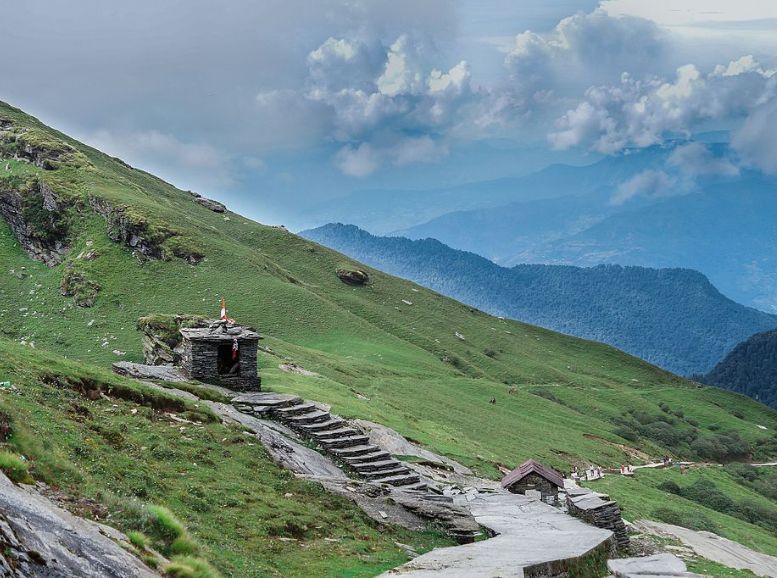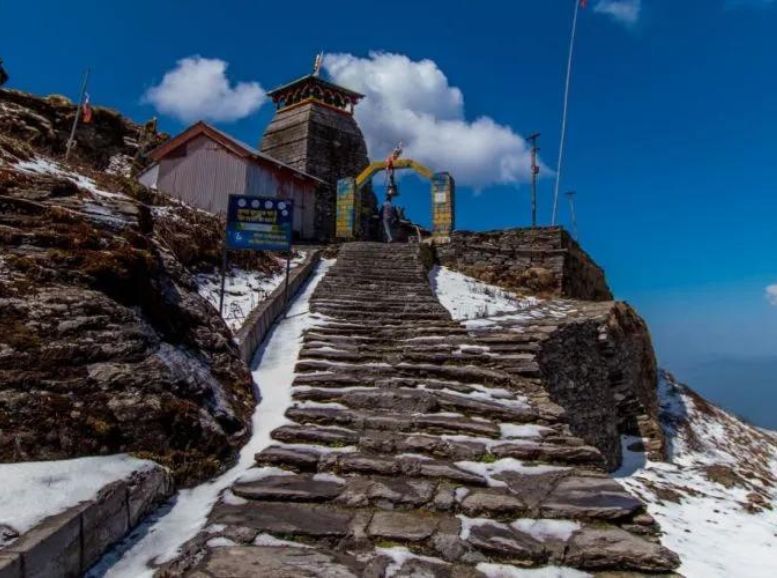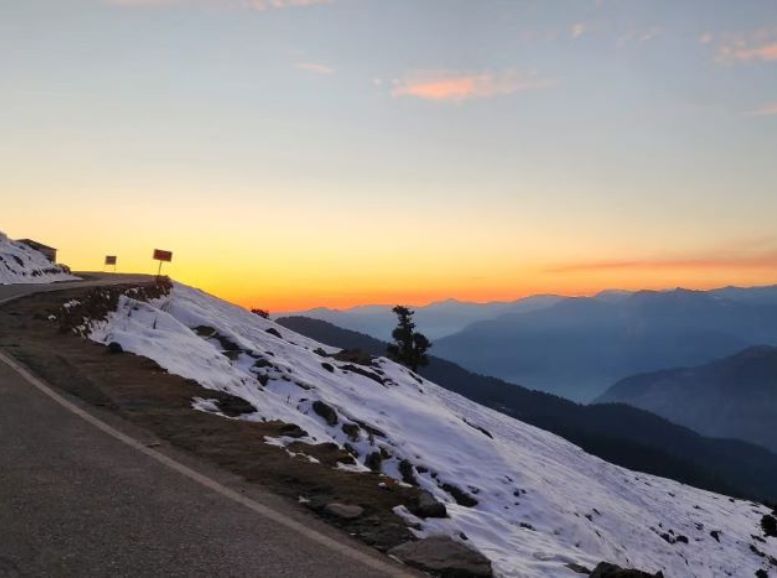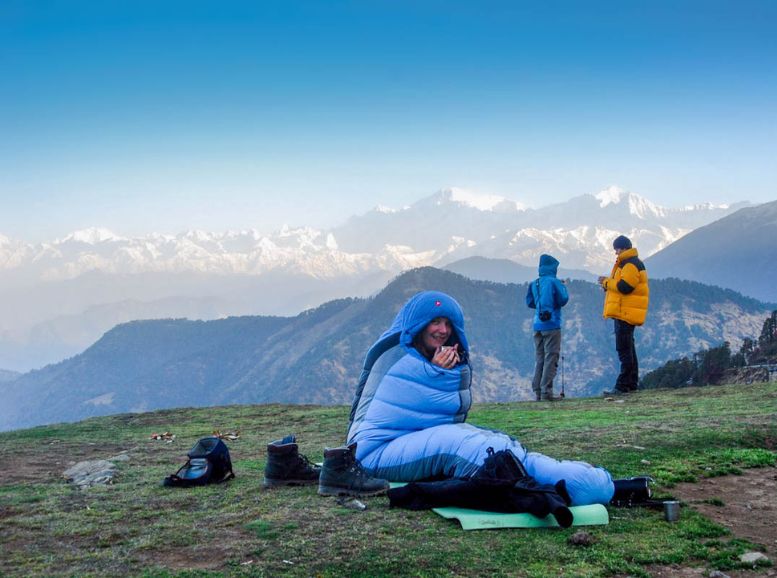Deep within the heart of the Himalayas, where snow-capped peaks pierce the azure sky, lies Chopta, a secret haven waiting to be unveiled. Nestled in the embrace of Uttarakhand, India, this captivating destination beckons nature lovers, adventure seekers, and spiritual pilgrims alike. Lush meadows unfurl like emerald carpets, while dense forests whisper tales of ancient secrets. Panoramic vistas unfold in all directions, offering a breathtaking escape from the clamor of modern life.
Join us on an exploration of Chopta’s captivating essence. We’ll traverse serene trekking trails, delve into the serenity of sacred temples, and unearth the treasures hidden within this enchanting locale. With every step, we’ll draw closer to the awe-inspiring majesty of the Himalayas, where Chopta promises an unforgettable encounter with nature’s grandeur.
How to reach:
- By Road:
- Chopta is accessible by road, with Ukhimath being the nearest major town, located approximately 40 kilometers away.
- From Ukhimath, travelers can opt for a taxi or local bus to reach Chopta, with the journey typically taking 1.5 to 2 hours.
- From Delhi:
- Travelers departing from Delhi can choose to take a bus or drive to Rishikesh or Haridwar, which serve as major transit points for Uttarakhand.
- From Rishikesh or Haridwar, they can then proceed by taxi or bus to Ukhimath, and subsequently to Chopta.
- By Train:
- The closest railway station to Chopta is located in Rishikesh, approximately 202 kilometers away.
- Upon reaching Rishikesh, travelers can continue their journey to Chopta by following the aforementioned road route.
- By Air:
- The nearest airport to Chopta is the Jolly Grant Airport in Dehradun, situated around 226 kilometers away.
- From Dehradun, travelers can hire a taxi or take a bus to Rishikesh or Haridwar, and then proceed to Chopta using the road network.
Best time to visit:
- Spring (March to May): Pleasant weather, blooming flowers, perfect for trekking and outdoor activities.
- Summer (June to August): Escape the heat of the plains, mild weather, good for trekking and camping, occasional monsoon rains.
- Autumn (September to November): Clear skies, stunning views, ideal for trekking, birdwatching, vibrant autumn foliage.
- Winter (December to February): Winter wonderland, snow-covered landscapes, perfect for snow sports (skiing, snowboarding, snow trekking), be prepared for road closures due to heavy snowfall.
Must-see places:
Unveiling the Beauty of Chopta:

This captivating region serves as the base for several popular treks, including the renowned Chandrashila trek. Embark on this adventure and be rewarded with panoramic vistas of the Himalayan range that will leave you speechless. As you wind your way through lush forests and meander along scenic trails, keep your eyes peeled for the diverse flora and fauna that call Chopta home. Rhododendrons burst forth in vibrant colors, deodar trees stand tall and proud, and the crisp mountain air may carry the calls of rare Himalayan birds.
Exploring Sacred Sites and Spiritual Sanctuaries:

Beyond its breathtaking natural beauty, this place holds deep spiritual significance for devotees and pilgrims. The region is sprinkled with ancient temples and sacred sites, each whispering tales of mythology and legend. A revered pilgrimage destination, Chopta is crowned by the Tungnath Temple, perched at an astonishing altitude of 3,680 meters. This majestic structure holds the distinction of being the highest Shiva temple in the world. Devotees undertake arduous treks to this sacred site, seeking blessings and the opportunity to immerse themselves in the divine atmosphere of the Himalayas.
Embracing Sustainable Tourism:

Chopta’s charm beckons countless visitors seeking adventure and tranquility. To ensure this enchanting region remains a pristine paradise, prioritizing sustainable tourism practices is paramount. Responsible trekking, minimizing waste, and supporting local communities are all essential for safeguarding Chopta’s environment and rich cultural heritage for future generations.
trekking:

Chopta’s embrace extends far beyond trekkers. Nature enthusiasts can immerse themselves in the serene beauty of the Himalayas in countless ways. Imagine waking up to crisp mountain air, the gentle murmur of streams, and the breathtaking panorama of snow-capped peaks. Pitch a tent amidst verdant meadows bursting with wildflowers, or embark on leisurely hikes through fragrant forests teeming with birdlife. Whether you seek the thrill of spotting rare Himalayan birds or the tranquility of stargazing under a blanket of stars, Chopta offers an unparalleled experience of rejuvenation for the soul.
Local experiences:
- Interact with Locals: Strike up conversations with villagers in local markets, perhaps even participating in a cultural event or festival if your visit coincides with one. Learning about their customs, traditions, and way of life fosters a deeper appreciation for the region.
- Homestay Experience: Opt for a traditional homestay run by local families. This provides comfortable accommodation and a unique opportunity to bond with your hosts. Savor home-cooked meals prepared with fresh, local ingredients, gaining valuable insights into the local lifestyle.
- Witness a Pooja: Experience the spiritual heart of Chopta by witnessing a pooja (religious ceremony) at the Tungnath Temple. Observe ancient rituals, listen to the chanting of mantras, and soak in the divine atmosphere of this sacred site.
- Culinary Delights: Venture beyond tourist menus and explore local eateries. Sample traditional Garhwali cuisine – delicacies like Mandua ki Roti, Gahat ki Dal, and Chainsoo – made with locally grown ingredients.
- Offbeat Adventures: Embark on offbeat treks or nature walks guided by local experts. Their intimate knowledge of the region allows you to explore hidden gems, pristine landscapes, and encounter wildlife in their natural habitat.
- Starry Nights: Chopta boasts clear skies, making it a haven for stargazing. Spend an evening away from city lights, marveling at the countless stars and constellations. For the photography enthusiasts, astrophotography opportunities abound under the breathtaking night sky.
Travel tips:
- Plan Ahead: Research weather conditions, trekking routes, and accommodation options in advance. Chopta experiences seasonal variations, so plan your trip based on your preferences (think: spring wildflowers or winter wonderland).
- Pack Smartly: Pack appropriate clothing and gear for the season. Layers, sturdy hiking shoes, sun protection, insect repellent, and a first-aid kit are essential. Winter visitors will need extra warmth and snow gear.
- Hydration is Key: Chopta’s altitude can lead to dehydration. Carry a refillable water bottle and sip frequently, especially during hikes and outdoor activities.
- Acclimatization Matters: If you’re coming from lower altitudes, allow time for acclimatization to prevent altitude sickness. Take it easy for the first few days and let your body adjust gradually.
- Respect the Culture: Chopta is steeped in tradition and religious beliefs. Dress modestly when visiting temples or interacting with locals, and be respectful of local customs.
- Travel Light: Pack only essentials and opt for a backpack to carry your belongings on treks or nature walks.
- Embrace Sustainability: Be a responsible tourist! Minimize your environmental impact by disposing of waste properly, avoiding littering, and choosing eco-friendly accommodations and tours.
- Stay Informed: Check weather forecasts, road conditions, and travel advisories before your trip. Carry a map or GPS, and inform someone about your travel plans, especially if trekking in remote areas.
- Safety First: Prioritize your safety, especially during adventurous activities. Follow safety guidelines, stay on marked trails, and avoid risky behavior to prevent accidents.
Conclusion
As you embark on your adventure to Chopta, remember, the journey itself is as enriching as the destination. Breathe in the crisp mountain air, feel the thrill of discovery with each step, and immerse yourself in the unparalleled beauty of the Himalayas. Whether you’re a seasoned adventurer or a nature enthusiast seeking tranquility, Xplro.com empowers you to plan your perfect Chopta escape. With its guidance, you’ll navigate winding trails with confidence, discover hidden gems, and immerse yourself in the region’s rich culture and traditions.
So, pack your bags, lace up your hiking boots, and embrace the spirit of exploration. Let Xplro.com be your trusted companion, guiding you every step of the way towards creating lasting memories in this breathtaking corner of the Himalayas. Chopta awaits, brimming with adventure, serenity, and experiences that will forever be etched in your heart.
FAQs
- Q: What is Chopta famous for?
- Chopta is renowned for its pristine natural beauty, picturesque landscapes, and spiritual significance. Often referred to as the “Mini Switzerland of Uttarakhand,” it captivates visitors with its resemblance to the Swiss Alps.
- Q: What is the best time to visit Chopta?
- The optimal time to visit Chopta is during the spring months (March to May) and autumn months (September to November). These seasons offer pleasant weather conditions and clear skies, ideal for trekking and sightseeing.
- Q: How do I reach Chopta?
- Chopta is accessible by road from major cities such as Delhi, Rishikesh, and Dehradun. The nearest railway station is located in Rishikesh, while the closest airport is the Jolly Grant Airport in Dehradun.
- Q: What are the popular treks in Chopta?
- Chopta is renowned for treks like the Tungnath-Chandrashila trek, Deoria Tal trek, and Chandrashila trek. These trails offer stunning views of the Himalayas and cater to both novice and experienced trekkers.
- Q: Is Chopta safe for solo travelers?
- Chopta is generally considered safe for solo travelers. However, it’s advisable to exercise caution, particularly while trekking in remote areas or traveling alone at night.
- Q: Are there accommodation options in Chopta?
- Yes, this place offers various accommodation options, including budget guesthouses, homestays, luxury resorts, and campsites. It’s recommended to book accommodation in advance, especially during peak tourist seasons.
- Q: What should I pack for a trip to Chopta?
- Essential items to pack include layered clothing, sturdy hiking shoes, sunscreen, insect repellent, a first-aid kit, and a refillable water bottle. For winter visits, warm clothing and snow gear are necessary.
- Q: Can I visit Chopta during the monsoon season?
- While it’s possible to visit during the monsoon season (June to August), outdoor activities may be limited due to rainfall and the risk of landslides.
- Q: Are there ATMs and medical facilities available in Chopta?
- ATM facilities are limited, so it’s advisable to carry sufficient cash. Medical facilities are also limited, with basic healthcare services available in nearby towns like Ukhimath and Rudraprayag.
- Q: Are there any restrictions on photography in Chopta?
- There are no specific restrictions, but it’s respectful to seek permission before photographing locals or religious sites.
- Q: What activities can I enjoy in Chopta besides trekking?
- Besides trekking, visitors can enjoy birdwatching, camping, stargazing, nature walks, and exploring nearby attractions like Tungnath Temple and Deoria Tal.
- Q: Is it possible to visit Chopta with children or elderly family members?
- Yes, Chopta is suitable for visitors of all ages. While some treks may be challenging, there are leisurely walks and scenic spots accessible to everyone.






